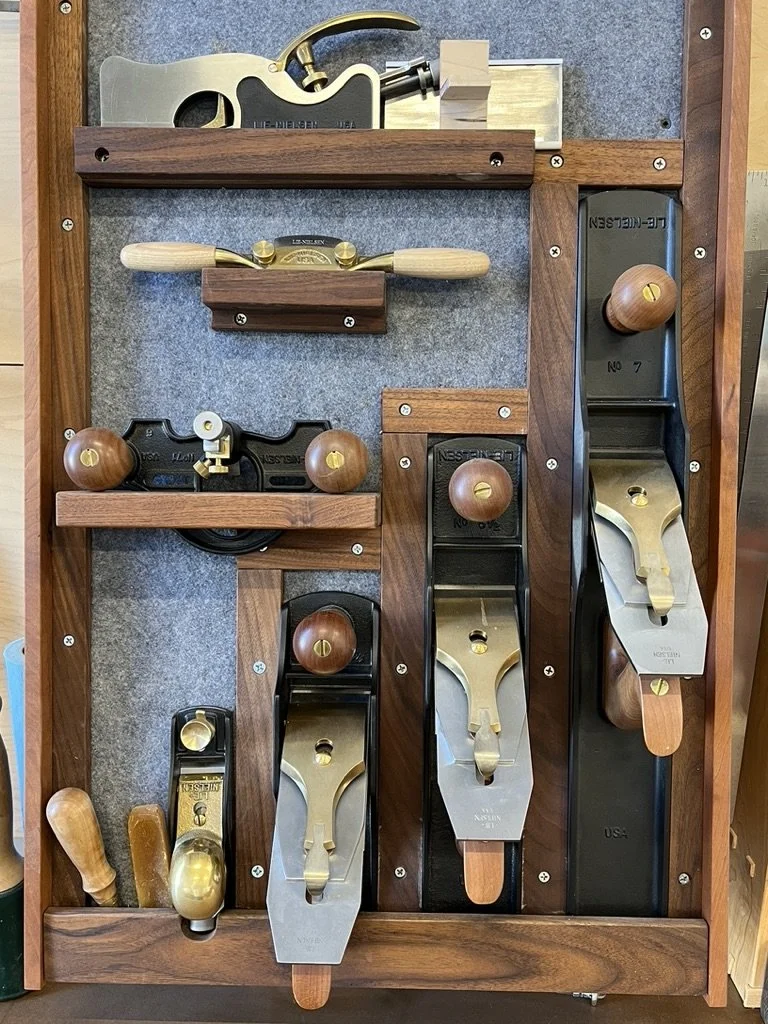5 Questions You Should Ask Your Custom Furniture Shop
You’re interested in a piece of custom furniture and have searched the internet or spoken with friends for a recommendation. Now you have a shop name. How do evaluate that shop? What factors will lead to a successful outcome for you, and for your chosen shop?
A beneficial collaboration starts with questions. The temptation is to jump to the first question in the minds of most folks - cost. What will this cost me. As we’ve discussed previously, thinking in terms of value is a better way to frame that question.
When evaluating a custom furniture maker think about these questions before jumping to costs:
What is your design process? How do you communicate?
How do you learn?
Can I visit the shop before or during a build?
What do you prioritize?
How do you handle conflicts?
Custom built furniture is an experience. From concept to design to build to delivery, it should be more than checking boxes. If checking boxes is all that’s desired then store bought furniture is probably the way to go. And that’s ok. You’ll likely save money, and if it meets your needs then that’s what is proper. But artisan furniture is a more immersive experience; on the front end with consultation and design, through the build process with updates and participation, to the end product with years of quality service.
Excellent communication is key to the process. Is your furniture artist asking you the right questions? Do you feel you’re being heard? Are you able to ask your questions? Are questions answered in a timely manner? Can you communicate directly with the craftsman? Do they know how to text or email? It’s not terribly difficult to assess communication ability. Make sure that communications styles work for you.
How people learn is an insight into their character. Are they readers or, in today’s world, watchers? Do they collaborate with other makers? Or have they learned all they think they need to? As a surgeon I used to run into this wall all the time with colleagues. “This is the way I trained,” they would say. But you trained 25 years ago! Aren’t there any new developments in surgery? The same goes for building. There are new tools, techniques, finishes, and so forth. Make sure your shop is at least up on what’s going on in the world.
The state of the shop can also shine a light on who you’re entering into a partnership with. Does the shop seem organized, proper, efficient? Are the tools reasonably clean and seem in working order? These things can reflect confidence, order and reliability. Or is everything haphazard, like a mad scientist’s lab? Mad scientists can produce amazing results, but you never know if and when those results might come.
Understanding priorities helps ensure that client and shop can be on the same page through the process. Some people have a my way or the highway approach. Some obsess over trivial details that can hang things up along the way. Some care more about form over function. Or function over form. These things aren’t necessarily wrong, but they need to align with your approach.
Conflict handling is not necessarily easy to talk about, but it’s important. Inevitably there will be some clashing of something during the custom furniture process. It might be disagreement on a design element. Or unhappiness with the color tone of the final piece. Or the grain pattern of a particular board. Or cost overruns. Regardless, having an understanding ahead of time will make the process better. You’ll probably have to read between the lines. If the maker says they just want the client to be happy, then you might not have their full investment. If they say they only go by the final contract then you might not have the kind of collaborator that you need. If they have their own conflict resolution mediator on speed dial then you should probably run.
Investing in custom furniture requires work from both parties during all phases. It starts, finishes and ends with proper communication. Questions are at the heart of good communication. The right questions matter. Are you ready to put in the effort to see the results?


